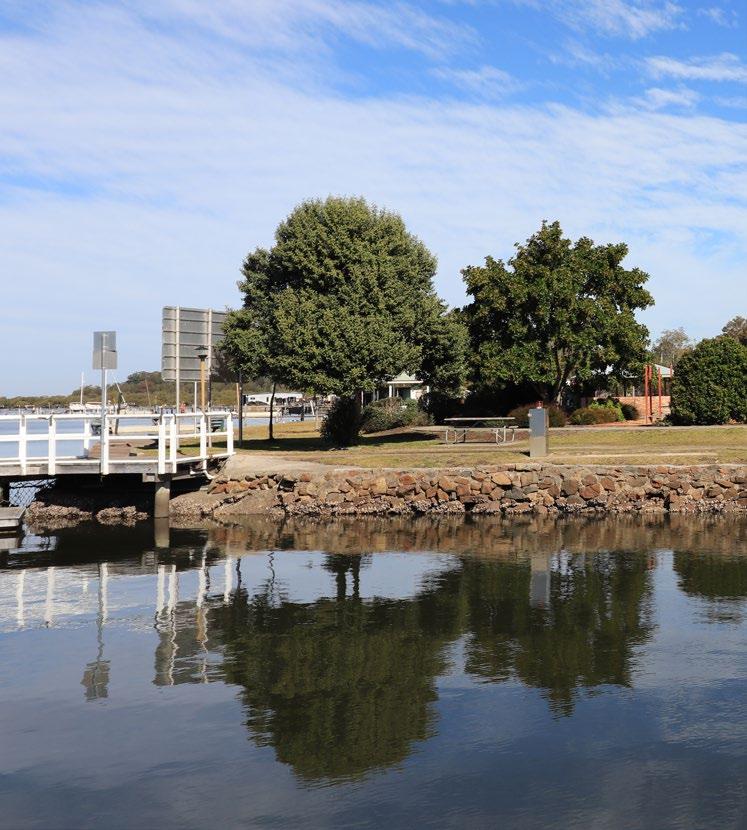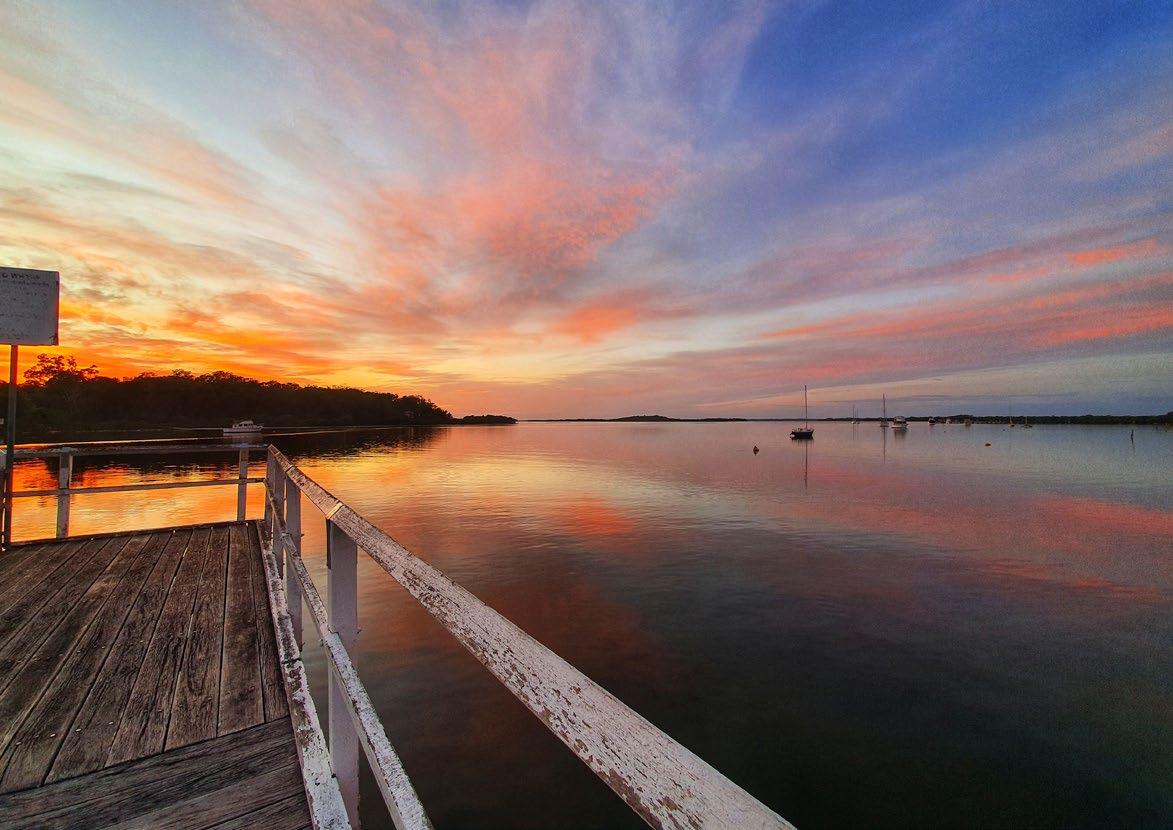Karuah PLACE PLAN



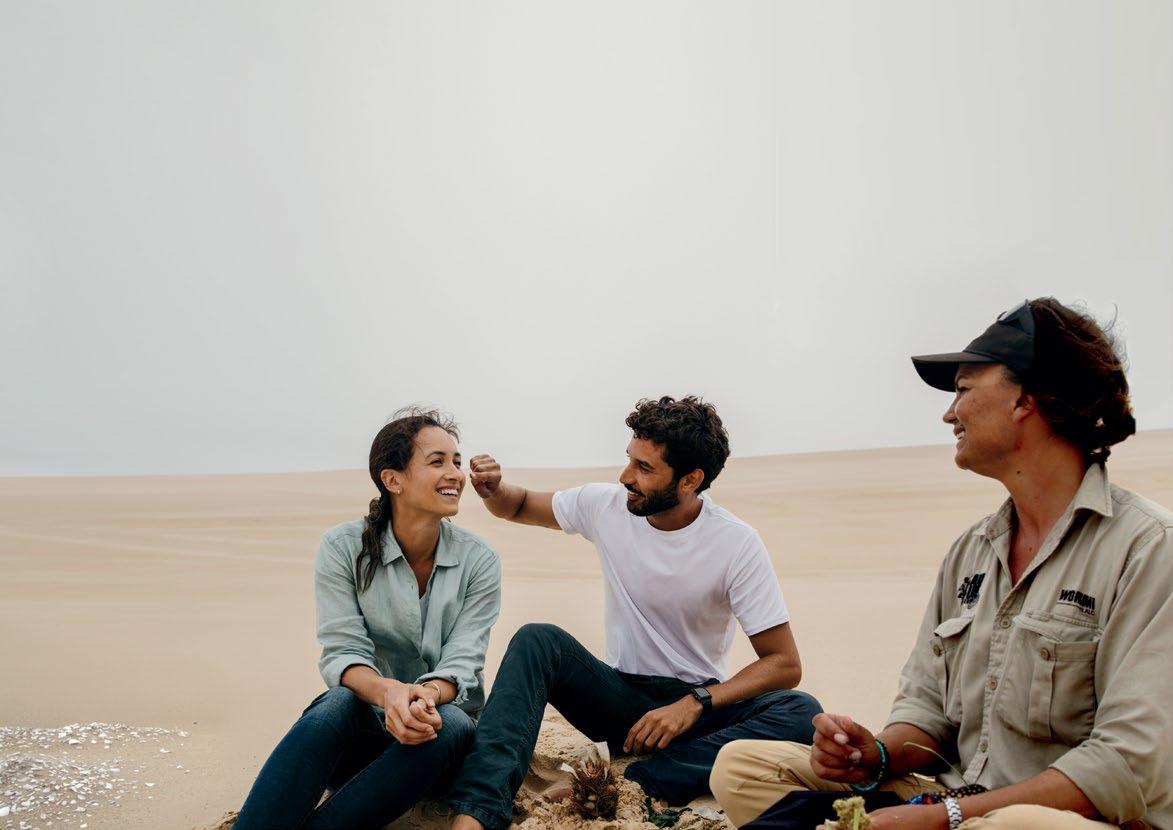
Port Stephens Council acknowledges the Worimi people as traditional owners and custodians of the lands and waterways on which we all live, learn, work and play. We value and respect the Worimi people and the legacy 60,000 years of Aboriginal Nation traditions and culture brings with it. As part of Council’s culture of acceptance, diversification and harmony we walk alongside the Worimi people on a journey of listening and learning. Together we will strive to make this a better place for all peoples.
As guardians of these lands, we ask that you tread lightly to help preserve the biodiversity and respect those who came before as well as those who will follow.
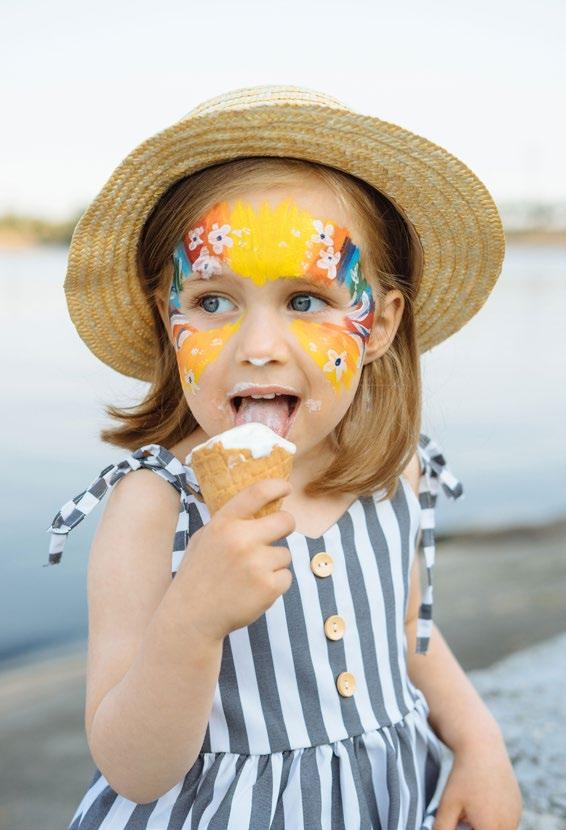
understand current community participation
Place Plans are a new way of planning for the growth of the unique towns and villages across Port Stephens. Place Plans provide a local filter on the Port Stephens Local Strategic Planning Statement and other strategic documents to create actions which improve the liveability and wellbeing of our communities.
The actions in our local Place Plans create alignment in the way we plan for future land use, invest in infrastructure, attract investment and bring life to our streets. Place Plans recognise the importance of our public spaces in creating great places to live, work and visit.
Most importantly, Place Plans start with our community; they respond to the community’s values and aspirations; they enable partnerships between residents, business and council and guide a collaborative approach to the delivery of great place outcomes.
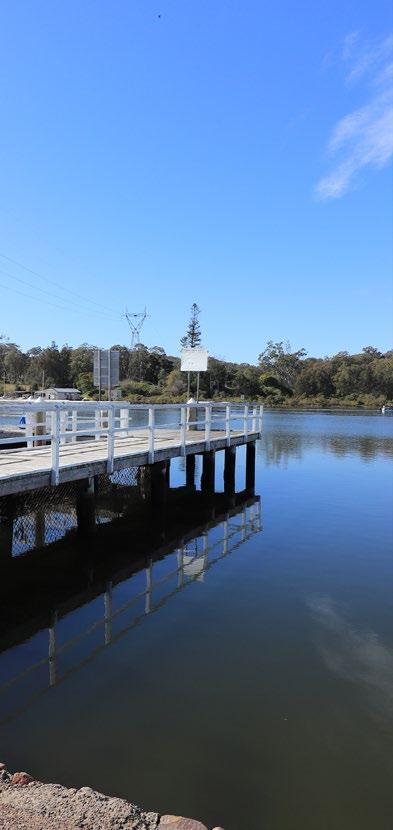
encouraging community participation...
... to all areas, from visioning to implementation
Through the Port Stephens Liveability Index, we know the values and priorities of our individual communities. This information creates the foundations of our Place Plans and helps guide planning decision making across our community.
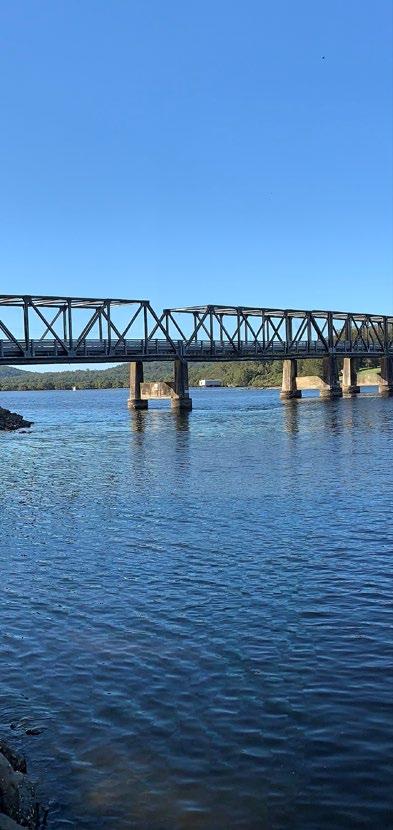
A culture that supports innovation and ideas is critical to the success of our Place Plans. By starting with yes, we can encourage new thinking, new ideas and attract more people to share in creating great places.
Great places don’t appear by accident; they take time and effort and a shared understanding that not every project will work every time. By testing and trialling low cost, short term ideas we learn by doing and create the stepping stones to bigger and better things.
The Port Stephens community is abundant with energy and expertise and people who want to be involved in planning and creating for their place. Place Plans will create opportunities for collaboration, foster pride and create connections.
When we trial a new idea, launch a new program or invest in our public spaces, we need to understand what works and what does not. Measuring the success of our projects and comparing these to the best possible examples we can find will help build amazing places where people will want to live, work and play.
Land is valued as spiritual by the Worimi people, local sense of place is enriched through Aboriginal oral story telling traditions in the Gathang* language.
Key habitat corridors are reinstated and protected, highly valued by locals. Future development respects the village character and is located to limit impact on native natural ecology, including vegetation and habitat.
Karuah is underpinned by a network of accessible and inclusive local infrastructure that meets the needs of the community.
The Karuah River should be acknowledged and celebrated for its historical and cultural significance and it’s value to the local economy, the environment and the people of Karuah. Traditionally the river was an important part of the Worimi people’s daily lives for fishing, lobster freediving, oyster collection and rituals.
Karuah is a peaceful village built around the shores of the Karuah River, which begins on the stunning slopes of the Gloucester Tops and ends on the waters of Port Stephens. Over its 101 kilometre course, the river descends more than 600 metres and is joined by 11 tributaries before it meets the sea.
The Worimi are the traditional custodians of Port Stephens. Their connection to the land and waters of Karuah stretches back thousands of years and remains strong today.
The character of the town is deeply connected to its Aboriginal heritage. The historic Karuah Mission (established in 1884) and the Karuah Local Aboriginal Land Council (established in 1983) continue to reinforce this connection to land and culture, so that it can be shared with and kept alive by future generations.
European settlers began timber milling in Karuah in the early 1800s and the town continues to be renowned for its timber industry today. The town is also known for its fishing and aquaculture, in particular, the
fresh oysters sold by farmers on the shores of the Karuah River.
Karuah has continued to evolve and change. The town is now emerging as an attractive place for those looking for an affordable lifestyle destination with an easy commute to key employment areas like Williamtown, Raymond Terrace and Newcastle. Karuah is also a much-loved holiday destination, particularly for those who enjoy boating and fishing.
Surrounded by the leafy bushland of the Karuah National Park, the cool waters of the Karuah River and the unique wetlands, it’s no surprise the local community place a high value on the incredible environment on their doorstep.
Karuah is moving forward with new housing developments, bringing an increasing number of young families to the town. Future planning is focused on driving social wellbeing, creating a more connected town centre, better accessibility to the waterfront and improved community facilities for all to enjoy.
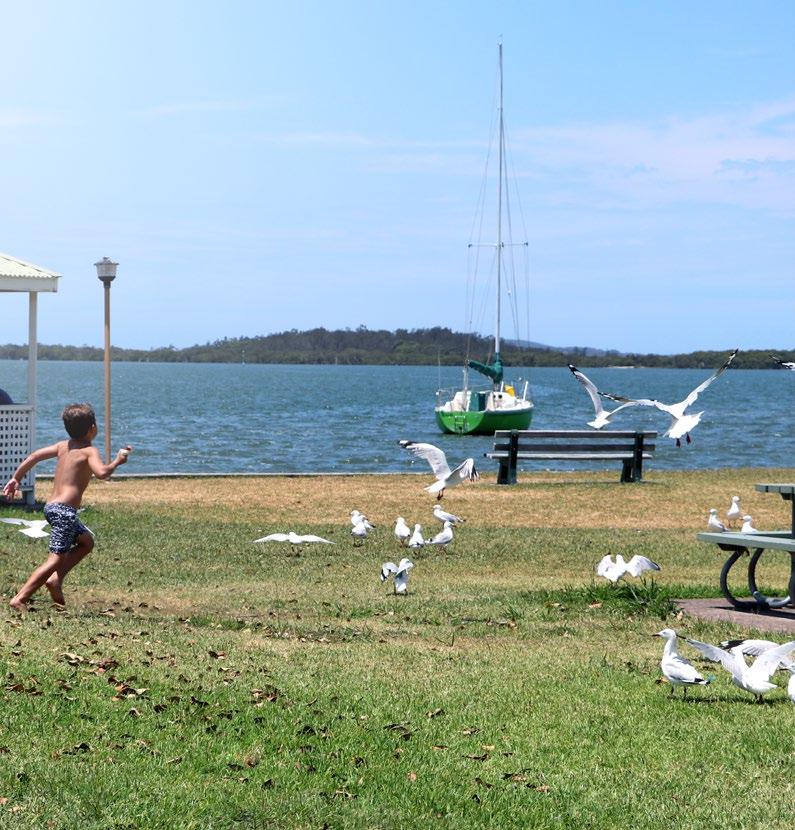
Liveability
In August 2020 we commenced community consultation to explore the future of Karuah. Since that time, we have engaged with lots of people, via a number of different forums:
What makes a place a great place to live?
That’s the question we asked our community in September 2020. More than 3,700 people across Port Stephens told us what they value about a place and how our places are performing.
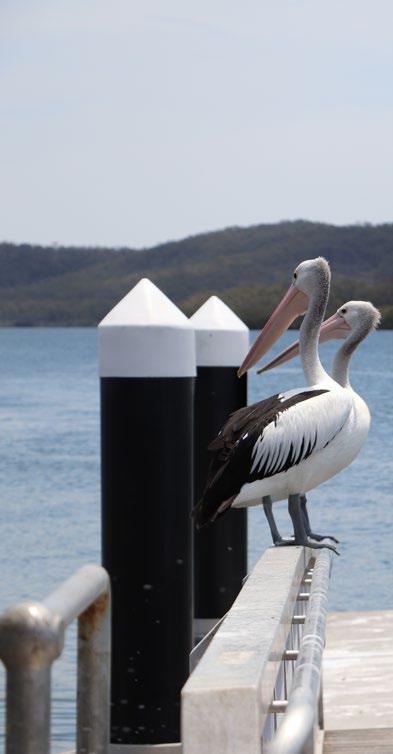
We have used this data to shape our Place Plan, to set the vision and the actions that best benefit the wellbeing of Karuah locals.
The results of the Liveabiltiy Index that communities found some themes for liveability were more commonly raised than others. The five most imporant elements of liveability for the people of Karuah are:
is simply what a place is like to live in – a liveable place is a healthy place.
In Karuah, your top priorities are In Karuah, your top strengths are In Karuah, you most value
These are the things most important to us in our ideal neighbourhood
General condition of public open space (street trees, footpaths, parks) 67%
Elements of natural environment (natural features, views, vegetation, topography, water, wildlife) 66%
Sense of neighbourhood safety (from crime, traffic and pollution) 64%
Local businesses that provide for daily needs (grocery stores, pharmacy, banks) 59%
Locally owned and operated businesses 56%
These are the things you care about most and say are performing well. We must continue to celebrate and protect these.
Sense of personal safety (for all ages, genders, day or night)
Elements of natural environment (natural features, views, vegetation, topography, water, wildlife)
Sense of neighbourhood safety (from crime, traffic and pollution)
Locally owned and operated businesses
These are the things most important to you and are underperforming. We must work to improve these.
General condition of private open space
Quality of public space
Evidence of Council / government management
Evidence of recent public investment
Access to neighbourhood amenities
Local businesses that provide for daily needs
Spaces suitable for specific activities or special interests
Walking/jogging/bike paths that connects housing to communal amenity
Local employment opportunities
Access and safety of walking, cycling and/or public transport
The Karuah Growth Strategy was adopted by Council in 2011 to guide future town growth. The strategy was very central to identifying how Karuah could adapt following the completion of the highway bypass in 2004. The Strategy established a land use plan to identify appropriate locations for new housing while considering economic and social development, environmental management and local infrastructure needs.
Since the adoption of the Karuah Growth Strategy, most of the land identified as suitable for residential development has been rezoned and new housing estates complete or under construction.
However, over the past few years, new population forecasts, and most importantly, housing demand, tells us that this current strategy needs to be reviewed and new land identified for future growth.
The Karuah Place Plan has been designed to support the Karuah Growth Strategy by identifying additional opportunities for residential development, employment lands and public infrastructure. Where there are any inconsistencies between the place plan and the strategy, the Karuah Place Plan will prevail.
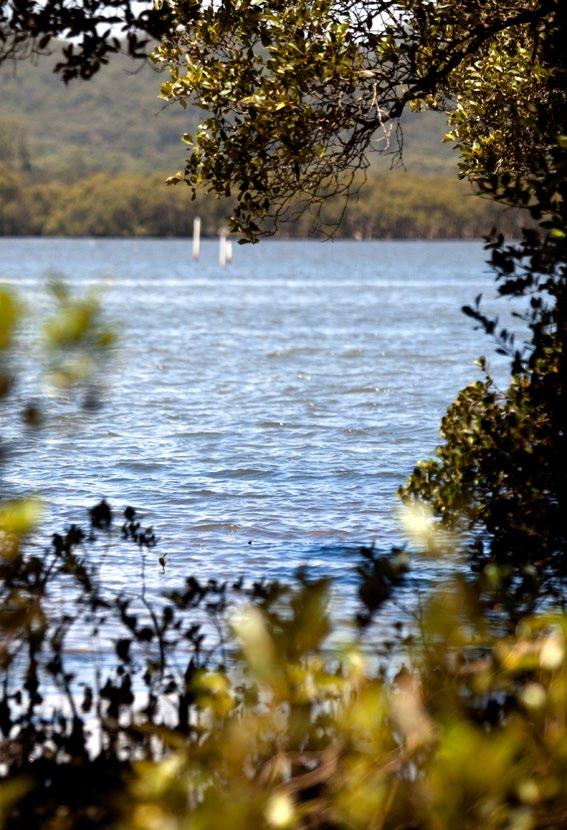
For many years, the oyster and timber industries have been the leading employment industries in Karuah and have been an important element in forming the identity of the people and the place.
Through the community engagement process, the need to ensure the long term viability of these industries was identified as important to the local community. New development will need to assess and consider these industries to minimise their impact and ensure their long-term sustainability. Critical issues include the maintenance of water quality to support the long term viability of the oyster operations and ensuring that sensitive land uses do not encroach on or impact on the continued operation (and potential growth) of the existing timber industry.
As Karuah grows and new residential land is released, new business and employment opportunities are needed within close proximity to town.
The 2011 Karuah Growth Strategy identifies land to the west of the town as suitable for industrial or employment land. Further investigation will be required to understand the short and long-term needs for employment land, the amount of employment land needed, the appropriate land use zone, the infrastructure required to service this land, and the recommended staging of any land release. This additional Employment land will enable the community of Karuah the chance to start new businesses, provide employment and training opportunities and offer additional services to the community.
To rezone land, a land owner or developer (the proponent) can request Council to change the planning laws to allow a different type of development on the land. The application needs to provide very specific detail of the proposed use of the site and the potential impacts that this new type of use might have on the place.
Planning proposals will need to address impacts on the operations of existing businesses and industries. This should include the consideration of impacts from the existing operations such as noise, air quality and traffic as well as the impacts of residential development on the viability and growth and of these businesses. A development control plan will need to be prepared to ensure that these matters are addressed at the development application stage.
Once this process is complete, Council makes a request to the NSW Government (called a Planning Proposal) to amend the Port Stephens Local Environmental Plan. You can find out more about this process here.
With a growing demand for regional and rural lifestyle opportunities, an increasing ability to work from home, along with favourable conditions for home buyers, housing demand across the Hunter Region continues to growth at a very high rate.
A 2019 Residential Land Needs Assessment outlined that in order to meet demand for housing in Karuah over the next 15 years, land for an additional 340 lots (or 27 hectares at 12.5 dwellings per hectare) needs to be rezoned and made suitable for residential housing development.
Using this data and taking into account the current market conditions, a short to medium term high growth scenario for Karuah has been assumed for this plan. This includes two stages of land release and identifying land for future investigation beyond these.
All applications to rezone land must continue to consider the requirements of the following strategies:
Karuah Growth Strategy
Local Strategic Planning Statement
Live Port Stephens
Hunter Regional Plan 2036
Stage one identifies land that has the necessary infrastructure to be rezoned now. This includes servicing by Hunter Water, which has been scheduled for implementation following planned local facility upgrades.

Alternative private systems may also be utilised in accordance with NSW Water Industry Competition Act 2006 to service new developments.
Stage two and the future investigation area identify opportunities for medium to long-term development. To move forward with these stages, developers will need to work closely with the relevant authorities to manage critical infrastructure such as sewerage and water. While sewer and water services are not currently available to service these stages, Hunter Water is exploring opportunities to increase capacity to service future development.
Biodiversity and fauna movement corridors are not designed to restrict development but to enhance the liveability of the place, protect local habitat and increase the wellbeing of those that live, work and visit the place.
The community of Karuah places a high value on the local environment and we know that the river, the wetlands and native bushland are all key to why people love living in Karuah.
We also know that this natural environment provides important habitat for native wildlife and is home to a diverse range of flora and fauna. Karuah’s wetlands and bushland play an important role in keeping waterways healthy by absorbing excess nutrients, slowing over land flows, and reducing sediment, pollution and erosion. Preserving the natural environment is key to ensuring the long term productivity of Karuah’s waterways and river.
When planning for future land use, Council needs to ensure the protection of these valuable habitats. As development in a place intensifies, consideration needs to be given to the function and importance of natural areas including the way in which native animals
access food sources, breeding sites and water.
The Stage 1 residential land release identifies some land that is currently vegetated. Further ecological investigations will need to be undertaken at the rezoning stage to determine the appropriate development footprint in these areas.
As part of any new development, applicants must show how they will minimise the impact on the natural environment and demonstrate how new habitat corridors will be created. In Karuah, two important biodiversity corridors have been identified.
The North – South Corridor has been identified as part of the Watagans to Stockton green corridor and recognised as a high priority regional conservation area within the Lower Hunter Regional Strategy and subsequent Hunter Regional Plan 2036, and the Lower Hunter Regional Conservation Plan.
The North-South Corridor is also identified in the Port Stephens Biodiversity Connectivity Mapping Project as a location where improvements to connectivity are required. As part of any rezoning, supporting studies, including biodiversity assessment, would be required to determine the appropriate location, size and scale for a biodiversity corridor.
The proposed East-West Corridor will provide connectivity to allow the movement of native animals away from proposed housing developments. This is not a defined corridor, it is a guide to where a corridor can be created. As part of any rezoning, an Ecological Assessment or BDAR will need to be undertaken to determine the best location, size and scale for a fauna movement corridor, along with detailing how this corridor will support the protection and enhancement of valuable environment that makes Karuah so unique.
Karuah’s focus for the future is identifying a sustainable and beneficial growth pattern to add value to the existing town, prioritise protection of habitat and valuing it’s existing cultural and environmental context.
The Karuah Place Plan identifies new urban release and should be read in conjunction with the 2011 Karuah Growth Strategy. The Karuah Place Plan overrides the Karuah Growth Strategy only where inconsistencies exist.
All rezoning proposals must include evidence of an agreement with Hunter Water Corporation confirming that the land can be adequately serviced, or evidence from a private water and sewer provider detailing the servicing arrangement and feasibility of the system.
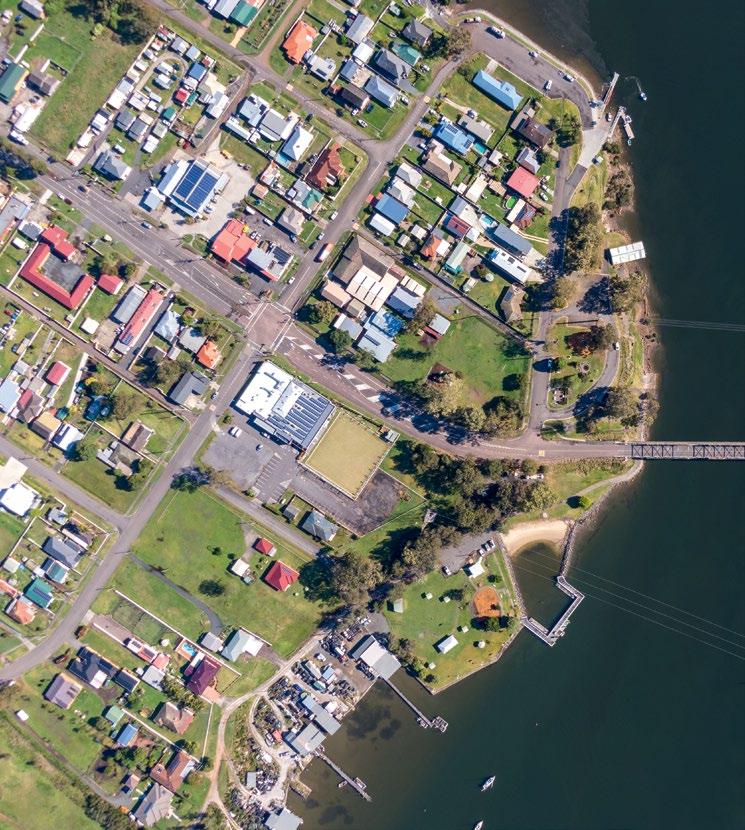

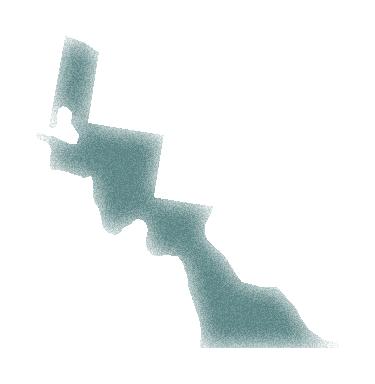


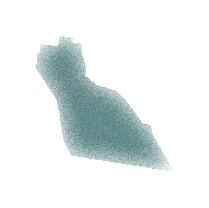


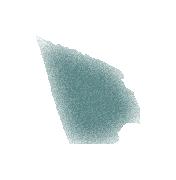
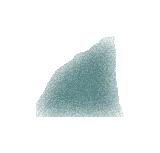




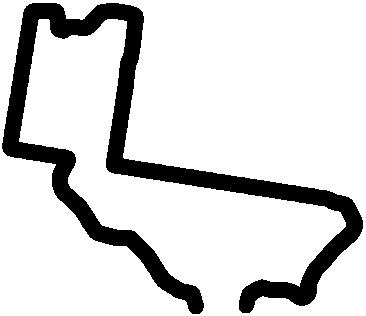
Place-making activities that are based on strong indigenous cultural values, developed in partnership with our Indigenous community, enhance the nature of place and a sense of community.

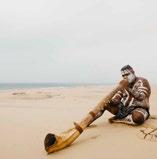
Port Stephens workers and volunteers contribute to place creation through their work with local business, industry and tourism. Collective working power is a strong resource in place-making activities.
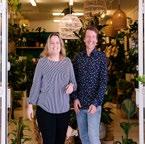

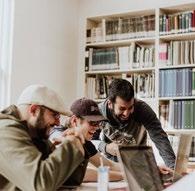
Image: John Chambers, Citizen of the Year 2020
Businesses have many opportunities to contribute place making, these may include funding community projects, collaborating, sharing resources, training local workers, or simply ensuring up-keep of their slice of the main street.
Council has three main roles in placemaking; it acts as a coordinator, an advocate or a delivery partner. Council also seeks partnership with business and community to create place-based events.
All kinds of residents in Port Stephens make an important contribution to the place they live through individual or collective effort.

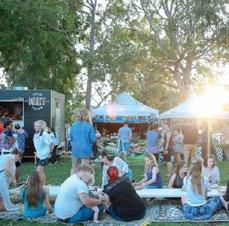
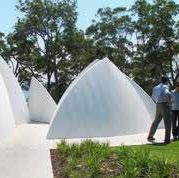
Residents might plant trees, share their knowledge or skill with community, voice an opinion on a strategic direction from Council or initiate a street party!
A town or city need people who believe in it’s potential and celebrate it’s success.
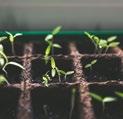
Investors play an active role in ensuring development aligns with strategic directors and invests in it’s future.
Community groups have a can-do and proactive attitude which is a highly valued quality in place-making projects. These groups are wide-ranging and may include sports, teams, schools, charities, clubs and social groups.
State government has three roles in placemaking; an authority, a strategic visionary and a funding body. Importantly, they have a significant role in the management of roads, parks and heritage - all important parts of place identity.
Creating great places requires a collaborative approach and ownership from all those that live, work and visit the place. By working together we can harness peoplepower to achieve more, and best of all, create lasting connections that improve liveability and increase the wellbeing of the Karuah community.
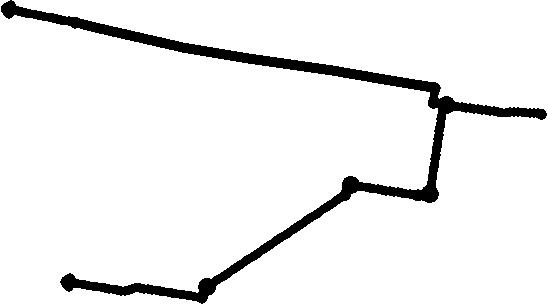
Great places bring people together. They are places you feel good in and want to spend time in. Great places don’t appear by accident, they are shaped and nurtured by deliberate actions from an engaged community. Great places are accessible and well connected, they are comfortable and project a good image, they attract people to participate in their activities and they are social environments where people want to gather.
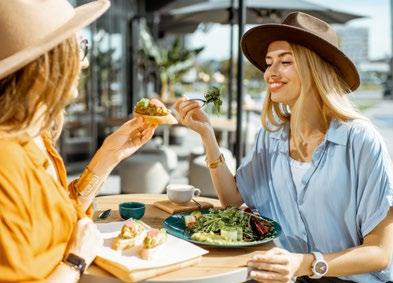
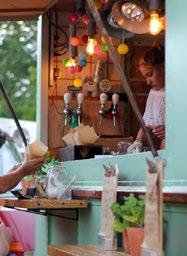
Community projects represent opportunities to deliver desired outcomes for Karuah, but these projects are not currently funded in Council’s work program. There are many other ways to deliver these outcomes –such as through grants obtained by either Council or community groups, fundraising by individuals or charity groups, donations or sponsorship by businesses, or agreements with developers.
Current town centre
Commercial/retail buildings
Community buildings
Transport / Parking
Pedestrian Car park
Access / Connections
Upgraded shared path
Recreation shared path
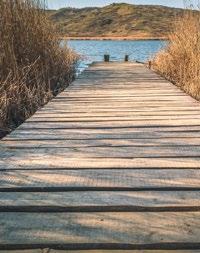
Proposed vehicle access
Council Works Labels
Recent Investment
Upcoming Projects

Potential Community Projects
These projects should inspire all of the community to get involved in creating a better Karuah; delivering the best future for Karuah requires everyone to contribute and work together.
Creating an attractive streetscape brings people into town and compels people to stay and linger. The use of a consistent colour palette and materials can help to create a beautiful town with its own, unique ‘look and feel’.
Small projects such as shop front renovations, fence replacements and street furniture may all present opportunities to create a more cohesive town centre and a sense of belonging to the community. The colour palette of earthy tones, represents the many attributes of Karuah and celebrates the diversity of the broader Port Stephens Central Ward region.
Yellow for the sandy soil and waterways, and for the stunning skies at dawn and dusk.
C: 0% M: 9% Y: 44% K: 0%
R: 255 G: 229 B:159 HEX: FFE59F
Grey for the iconic Karuah Bridge that spans the river and connects our town.
C: 35% M: 28% Y: 32% K: 0%
R: 171 G: 170 B: 165
Hex: ABAAA5
Green for the diverse vegetation of native bushland and the dense mangroves that line the Karuah River.
C: 91% M: 44% Y: 66% K: 35%
R: 0 G: 86 B: 78
Hex: 00554D
Rusted steel for industrial components of the Central Ward and its surrounds.
Burnt orange for the bright coloured ochre found in around Karuah, which was used for ceremonial dances by the Worimi.
C: 19% M: 69% Y: 94% K: 6%
R: 193 G: 102 B: 50
Hex: C16632
Brown for the natural materials of stone and other natural materials found within Karuah and surrounds.
C: 29% M: 41% Y: 56% K: 3% R: 181 G: 146 B: 117 Hex: B59275
Deep blue for the cool waters of the Karuah River, where fishing and boating have long been popular pastimes.
C: 86% M: 58% Y: 44% K: 26%
R: 43 G: 83 B: 101
Hex: 2A5364
Clear-finished timber for the local timber, produced in Karuah and used far and wide.

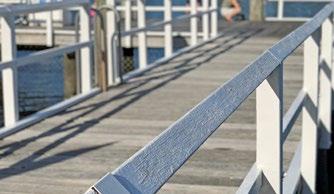


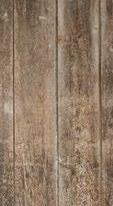
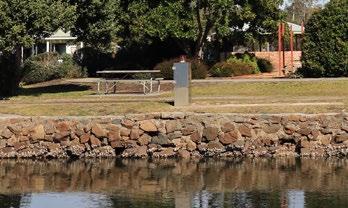
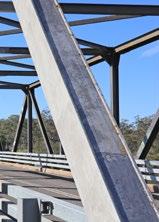

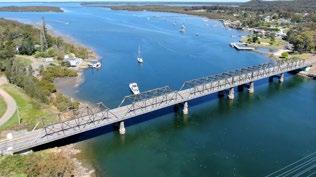
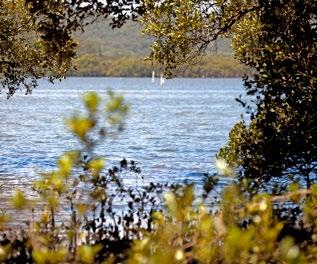
Opportunities to enhance public main street: 1. redevelop vacant lots
in-fill development

Integrate Education Program and Community Skills at Local School
Activation of school grounds outside of hours (Share our Space program)
Morten Oval
Men’s Shed
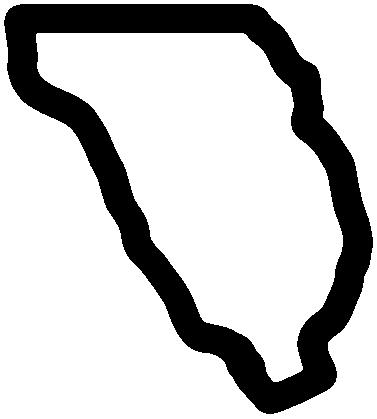
Potential location for food/coffee truck

Explore opportunities for short-term boat visitation, including options for water transport and tour boats.
Local Oyster Farms Produce ‘Farm to table, on-site oysters and wine’
street presence
Pedestrian-focused main street at town centre
Community buildings
Local oyster industry
Public recreation
Forest reserves
Holiday caravan park
Wetlands
Access / Connections
Existing shared paths
Possible future shared paths
Heritage walk to Tahlee
Promote permeability from town to river where possible

Public Amenities
Community church Tennis courts
Dog park
Sports and recreation
Activation Icons
Opportunity for activation
Existing opportunities
Creating vibrancy in our town centres and public spaces requires a collaborative approach. It requires ownership from Council, business and the community to create places that are resilient, welcoming and inclusive. Place activation is not about big budgets and big infrastructure.
It is about creating unique and innovative experiences and testing new ideas which are connected to our local identity both through the built form of the place and the Programming of the space.
Did you know that Council offers a range of funding streams for our community to create vibrant places and improve the livibility of their town? Visit our website to find out more or call our friendly staff on 4888 0255.
Karuah’s PlacescoreTM results have inspired a series of action items. Port Stephens Council is part of the community and we have one of three roles in delivering these actions. As a coordinator, we will help by identifying approvals required or advise you about funding opportunities. As an advocate, we may provide support, permission, encouragement or funding. In delivering, we will fund and deliver the project. advocate
Submit an expression of interest to Council or coordinate with a local shop to locate a coffee truck or food truck on the main street or in Longworth Park.
A prime location that draws in the school drop off crowd and services the riverside parks is shown on the map (page 22). Talk to Council about our business toolkit for outdoor trading.
Karuah already has a number of great facilities but these are not used to their full potential. There is opportunity to diversify the use of these spaces; explore opportunities to collaborate with the owners of waterfront sheds, under-utilised buildings or other spaces to create a new uses or business, such as a kayak hire, art studio, community tool library or a lunchtime river tour destination that showcases the local oysters.
coordinate deliver
$ Years 1 2 4 3 5
$ Years 1 2 4 3 5
Note: budget and delivery time-frames are an estimate and subject to further investigation.
Lead: Business
Lead: Community
A more beautiful main street will draw in more visitors and increase demand for a variety of local businesses. Initiate a public art project, investigate asphalt art projects, create a pot plant garden on the street, or start a town pride group to run street beautification activity. Talk to building owners who might support a beautification project on their property.
Check in with Council for what activities can be done without approval and to discuss grant opportunities. $ Years
A comfortable walking environment includes places for rest and leads to higher occupation of a street. Build a space for sitting, maybe with cover, shade or weather protection.
Give people a reason to stay on the street, in front of your business, which will draw in other customers. Check in with Council about what can be built without approval. $ Years 1 2 4 3 5
A tidy and visually appealing main street will create pride of place and encourage others to keep their town tidy. Council, individuals and community groups continue to be responsible for keeping both public and private spaces in Karuah tidy and creating a sense of pride.
Lead: Council/Business
Businesses can consider reviewing how their premises presents to the street; evaluate whether the business signage could be freshened up, or re-finish the façade by aligning with the colours and materials on the ‘look and feel’ page. Lead: Business
Karuah’s PlacescoreTM results have inspired a series of action items. Port Stephens Council is part of the community and we have one of three roles in delivering these actions. As a coordinator, we will help by identifying approvals required or advise you about funding opportunities. As an advocate, we may provide support, permission, encouragement or funding. In delivering, we will fund and deliver the project.
Are you passionate about conservation?
Share your knowledge and time with school or community groups by organising regular ‘explore your habitat’ walks or hold a workshop on how to build nesting boxes for birds, nurture pollinator habitat or plant butterfly attracting gardens.
These conservation projects could be located in public places or within backyards.
Karuah’s Landcare group is looking for more volunteers so that they can continue their important role as custodians of the natural environment.
Council, together with local volunteers, will hold a community event and environmental workshop to outline the important work Landcare does, and encourage more community members to get involved. Lead: Council
Note: budget and delivery time-frames are an estimate and subject to further investigation.
Town entry signs provide residents and visitors with a sense of arrival to a place.
Council will construct a new town entry sign on the southern entrance to town (location to be determined) to announce arrival to Karuah.
Karuah’s wetland boardwalk is a much-loved asset, allowing the community to access the wetland in a way that does not damage the sensitive environment.
The boardwalk structure is in need of repair and maintenance. In the short term, Council will undertake vegetation management to assist the Landcare group in continuing the maintenance of the area. In the longer term, repair of the structure is an ideal community project that benefits the local environment. Grant funding should be sought to assist in this project. Lead: Community
Council understands that it can be hard to know how to start a project, what approvals are required or whether there are funding streams available.
Fact sheets will be prepared and a campaign will be undertaken to educate the community about how to get involved and start implementing the Karuah Place Plan and improving their town.
Council will offer concierge services for business, volunteers and event organisers to help facilitate projects. Lead: Council
Karuah is an ideal location for short-stay visitors, with a desirable amenity and access to goods and services. Investigate providing RV friendly locations within the town to generate new tourist activity, this will include clarifying tourist stay options to avoid illegal parking and providing infrastructure and amenity needs.
Help visitor’s ability to navigate to Karuah by improving virtual wayfinding; advocate to have local information on Google Maps updated and the Karuah placename moved to the correct location.
Engage with State Government to initiate highway by-pass signage to draw in passing travellers.
Economy
Karuah’s PlacescoreTM results have inspired a series of action items. Port Stephens Council is part of the community and we have one of three roles in delivering these actions. As a coordinator, we will help by identifying approvals required or advise you about funding opportunities. As an advocate, we may provide support, permission, encouragement or funding. In delivering, we will fund and deliver the project. advocate
coordinate deliver
Note: budget and delivery time-frames are an estimate and subject to further investigation.
Lead: Community
Create a pedestrian friendly main street by slowing down traffic, providing more pedestrian crossing opportunities and making it easier to cross the road.
While closing traffic lanes is expensive, lower cost initiatives to provide a pedestrian friendly environment can be investigated.
The riverfront is one of Karuah’s best assets, yet it is not well connected to the town centre. Creating interest points, removing barriers and installing activation spaces between Tarean Rd and Longworth Park will improve this connection. This could be achieved through artwork, signage, removal of impermeable fences and hedges or by business reorientating or creating an opening to Tarean Rd. Lead:
Gaps between buildings and empty shops have a de-activation effect, creating a sense of neglect and an underused main street. Empty lots could be used for community gardens, alfresco dining opportunities, play spaces or interactive art installations. Consider using empty shops for community run pop up libraries, galleries / studios or coworking facilities. Short-term or reduced rent options of these spaces could be negotiated. Talk to Council about funding opportunities for trial activation projects.
Karuah’s PlacescoreTM results have inspired a series of action items. Port Stephens Council is part of the community and we have one of three roles in delivering these actions. As a coordinator, we will help by identifying approvals required or advise you about funding opportunities. As an advocate, we may provide support, permission, encouragement or funding. In delivering, we will fund and deliver the project.
Karuah has some great locations for festivals and larger scale gatherings. Longworth Park, Aliceton Reserve and Lionel Morten Oval have high quality facilities that might be suitable for your next festival or event.
Council will continue to advocate for events in Karuah and can provide assistance with planning, marketing and funding.
Talk to us about opportunities to host your next event in Karuah.
Karuah has a strong Aboriginal heritage that has shaped and formed the identity of the town. Explore opportunities to showcase Aboriginal cultural heritage through public art and signage.
Note: budget and delivery time-frames are an estimate and subject to further investigation.
The Karuah chapter of the Development Control Plan will require review to ensure that new development incorporates the values and liveability priorities of the community. $ Years 1 2 4
Lead: Council
An update to the Local Infrastructure Plan is required to ensure that infrastructure, services and facilities are provided to support the local community. $ Years 1 2 4 3 5 Lead: Council
Karuah’s main street continues to reflect the town’s history as a bypassed highway town, creating a disjointed town centre.
In the short term, Council will undertake a traffic and transport study of Tarean Road to determine proposed road infrastructure requirements and will include assessment of existing traffic and parking needs, road surface condition, speed environment, need for traffic calming devices, median treatments and pedestrian facilities. In the longer term, this information will be used to help inform the infrastructure requirements for future improvement projects in Karuah.
The river is one of the Karuah’s most loved features, yet getting out on the water can be a bit tricky for some users. Options to improve this access should be investigated so that activities like kayaking and stand up paddle boarding on the river is made easier. Infrastructure, such as locations to temporarily park watercraft and access ramps may be needed.
Economy
Karuah’s PlacescoreTM results have inspired a series of action items. Port Stephens Council is part of the community and we have one of three roles in delivering these actions. As a coordinator, we will help by identifying approvals required or advise you about funding opportunities. As an advocate, we may provide support, permission, encouragement or funding. In delivering, we will fund and deliver the project. advocate
coordinate deliver
Note: budget and delivery time-frames are an estimate and subject to further investigation.
Lead: Community
Karuah’s oysters are some of the best in Australia and are much sought after. Opportunities to diversify the oyster industry could be explored by business owners –such as champagne oyster tours that showcase the local delicacy and attract more people to Karuah. Lead: Business
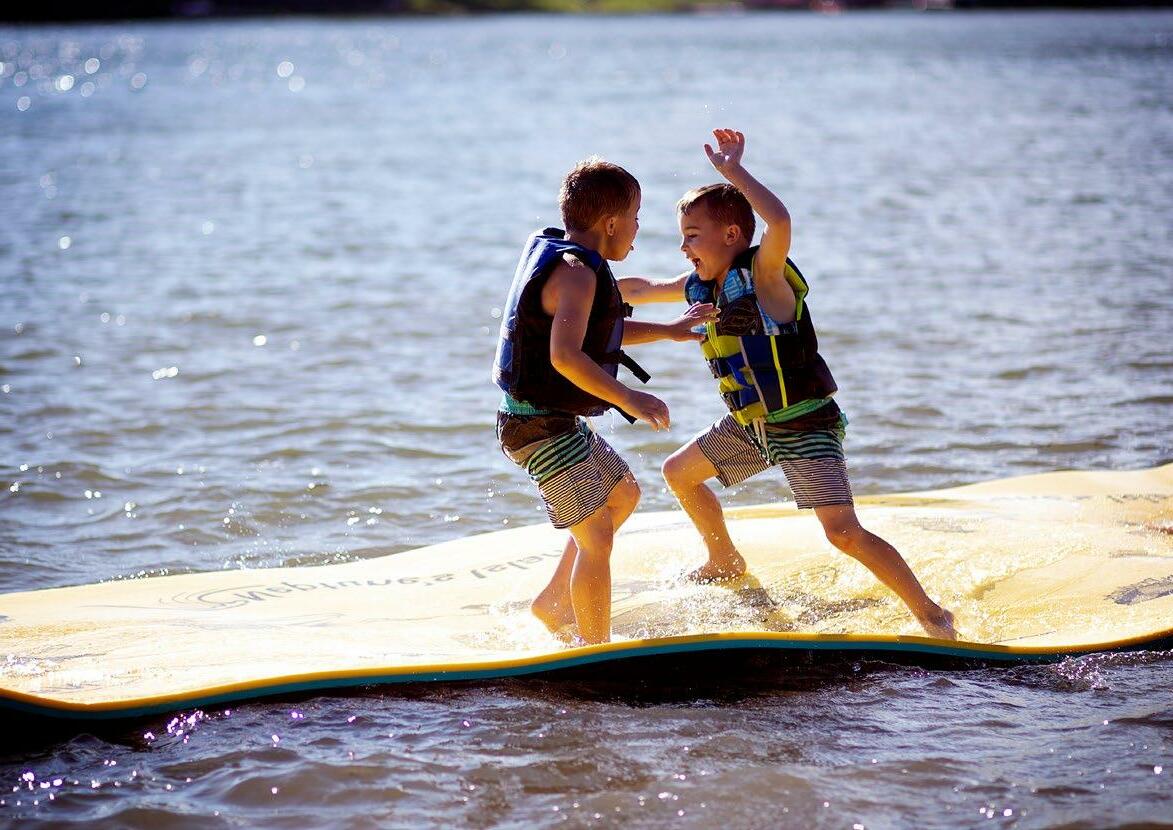
Karuah’s PlacescoreTM results have inspired a series of action items. Port Stephens Council is part of the community and we have one of three roles in delivering these actions. As a coordinator, we will help by identifying approvals required or advise you about funding opportunities. As an advocate, we may provide support, permission, encouragement or funding. In delivering, we will fund and deliver the project.
Improve wayfinding and create safer pedestrian and vehicle access to Longworth Park. Investigate options to improve entry and egress to the car park to reduce congestion during peak times. Review pedestrian access to determine usability and safety and investigate funding for improvements. Work with the community or business leaders to create better wayfinding from the town centre.
Amenity improvements give community better enjoyment of their public spaces. Council has recently built new toilet facilities and replaced the barbecues in Longworth Park, and in the longer term has plans for a new playground. Features such as play equipment, shade structures and fencing will be considered in order to create a safer play environment.
Council
Note: budget and delivery time-frames are an estimate and subject to further investigation.
In the shorter term, Council has plans for a new playground and public amenity project in Aliceton Reserve, which will replace the aging playground in Memorial Park. Council will consult with the community when designing the new facilities at Aliceton Reserve.
Karuah’s community wants development to happen sustainably, prioritising biodiversity and nature, which we know is highly valued by the community. While additional houses in Karuah will help build the local economy, it is important that the location of new development considers the avoid, manage and offset principles of sustainable development.
